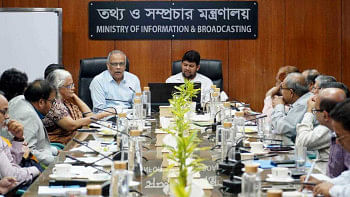Unlocking the potential: South-South cooperation
Foreign aid which entails transfer of resources, both financial and technical, from north to south has remained the dominant form of development cooperation since the end of WWII. However, the cessation of the cold war gave impetus to not only greater mobilisation of foreign aid but also to its effective use. The aid effectiveness agenda of the 90s' emphasised not only on development results, but also urged the provider countries to channelise their aid in a transparent way respecting the national systems.
The expected transition from the Millennium Development Goals (MDGs) to the Sustainable Development Goals (SDGs) will be a watershed in the global aid architecture. The transformative nature of the SDGs will necessitate not only much stronger and effective political coalition and partnership among governments, private sector, civil society organisations and the like in the northern and southern countries, but also among countries of the south. The huge amount of resources that will be required to attain the SDGs in economic, social and environmental areas cannot be met from the Official Development Assistance (ODA) alone. The Financing for Development Meeting in Addis Ababa, Ethiopia in July2015 will explore in greater detail the potential of different sources of development financing including the SSC.
The UN Secretary General's Report of 2014 on South-South cooperation highlighted stronger economic performance of the southern countries and greater cooperation among them. The South-South cooperation is initiated, organised and managed by developing countries themselves. This typology of development cooperation has been found to be not only cost-effective but also culturally more congruent. The sharing of knowledge and experiences about socio-economic development can help to adopt appropriate, inclusive and effective development solutions in the developing countries.
It is expected that South-South and Triangular cooperation among southern countries in trade, investment, remittance, development assistance, technology transfer and knowledge sharing will figure prominently as an important instrument of development cooperation in the post-2015 era. The full potential of South-South cooperation would be realised if the developed countries and multilateral organisations participate in a triangular relationship with financial and technical support to solve the complex development challenges countries in the south face. The exchange and cooperation among southern countries in these areas have increased substantially albeit somewhat inconspicuously. The rising trend in their cooperation is exemplified by the fact that in 2012, South-South trade and investment comprised 25 percent and52 percent of global merchandise export and FDI flows respectively.
Some of the middle-income economies of the south have become outstanding sources of development assistance and providers of technical support for institutional and human capacity building. The rapid increase in such South-South cooperation has challenged our preconceived notions of the international development cooperation architecture. The South's potency as an economic force with ability to complement the traditional North-South mode of Cooperation has started to get global recognition. The Human Development Report 2013 (UNDP) published under the rubric 'The rise of the South' gives ample testimony to the south's new found vitality as an important mechanism of development cooperation.
The countries in the south possess a rich trove of development knowledge. Some of the success stories of Bangladesh that can be shared with other countries include: improving girls' education through introduction of a conditional cash transfer programme in 1997; near universal coverage of the sanitation programme; local adaptation strategies to climate-induced natural disasters; disaster preparedness; non-formal education through GO/NGO partnership; micro-credit as a tool for skill formation and poverty reduction; and use of ICT and mobile telephone to empower the poor.
Bangladesh is championing the resurgent mode of development cooperation under South-South banner globally, regionally and also at the country level. The Permanent Representative of Bangladesh to the UN is the current President of the General Assembly High-Level Committee on South-South cooperation. Senior secretary, Economic Relations Division, Ministry of Finance is the chairperson of the Asia-Pacific Development Effectiveness facility (AP-DEF), a regional platform for the southern countries in Asia- Pacific region to learn from each other's development experience and to coordinate positions on global discourse on development. At the country level, the Economic Relations Division (ERD) is taking measures to bring the South-South cooperation under a policy framework through adoption of a foreign aid policy. Efforts are also underway to embed South-South cooperation in the government machinery by creating a new administrative wing. Bangladesh has also decided to become a founding member of the Asian Infrastructure Investment Bank (AIIB), a southern initiative to support infrastructure financing in the region.
South-South cooperation has been in existence for nearly 60 years. It has had a chequered journey starting with the UN Conference in Buenos Aires in 1978 that provided the first global framework for SSC. The Accra Agenda for Action in 2008 is the tipping point for resurgence of SSC as a tool of development cooperation.
Against the backdrop, the Economic Relations Division of Bangladesh's Ministry of Finance, along with UNDP and UNOSSC is convening a high level international meeting on May 17-18 this year on South-South and Triangular Cooperation in the Post-2015 Development Agenda. A large number of participants from southern countries including from multilateral organisations are expected to attend this event.
The upcoming meeting will be an excellent opportunity to discuss how to further strengthen South-South collaboration, in particular in the field of science, technology and innovation and exchange experience in the application of technology in key sectors such as agriculture, health, infrastructure development, climate change and renewable energy. Concerted efforts will be needed to unlock the full potential of SSC by embedding SSC in national development strategies along with a strong policy support.
The author is a senior civil servant currently working as Senior Secretary of the Economic Relations Division (ERD), Ministry of Finance, Government of Bangladesh.

 For all latest news, follow The Daily Star's Google News channel.
For all latest news, follow The Daily Star's Google News channel. 



Comments